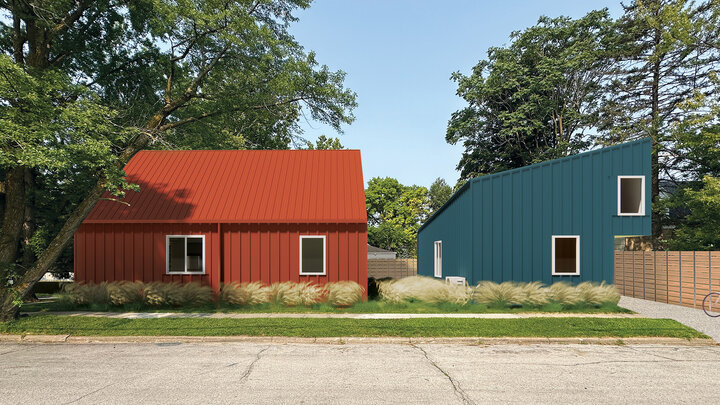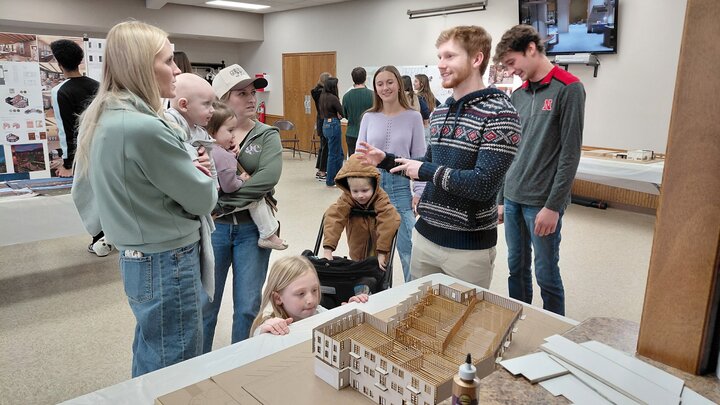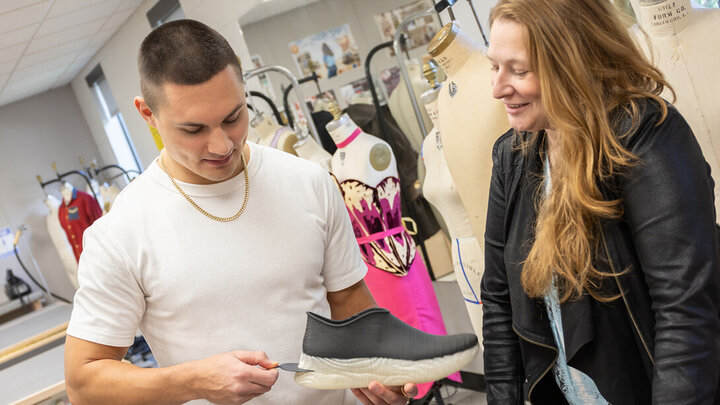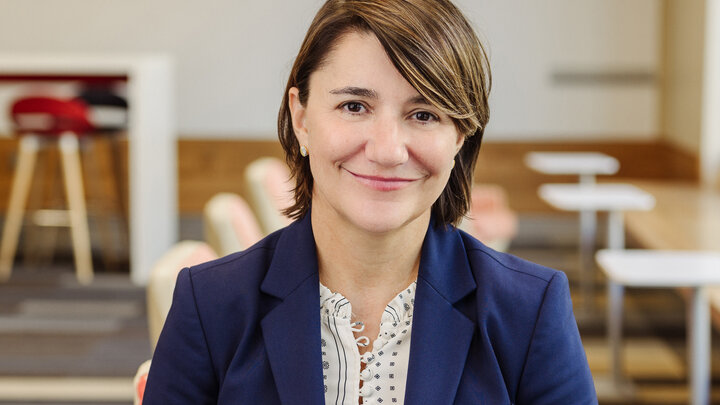The University of Nebraska–Lincoln College of Architecture, in partnership with Partners for Livable Omaha and Holy Name Housing Corp., is launching a groundbreaking housing initiative to address Omaha’s growing demand for affordable, age-friendly homes.
A groundbreaking ceremony is scheduled for 10 a.m. Monday, June 2, at 5804 Corby St. in Omaha’s historic Benson neighborhood. The event will mark the start of construction for two new homes — the Benson House and the Corby House — designed and developed by the college’s FACT (Fabrication and Construction Team) designbuild studio.
“These homes are more than just buildings — they’re part of a smarter, more adaptable system for housing,” said Jessica Scheuerman, executive director of Partners for Livable Omaha. “We’re creating options that are affordable, flexible and ready to meet life’s changing needs.”
The homes are the first constructed designs in the OurStory project, a collaboration between the College of Architecture and Livable Omaha. The initiative explores scalable solutions to Omaha’s housing affordability crisis by developing small, sustainable homes tailored to both older adults and first-time homebuyers.
“This isn’t just a design exercise — it’s real-world impact,” said Jeffrey L. Day, FAIA, professor and director of the FACT studio. “Our students are creating homes that address real urban challenges — aging in place, affordability and sustainability — through thoughtful architectural design.”
The Corby House will feature a two-bedroom, 802-square-foot layout with a list price of $190,000. The Benson House will offer a one-bedroom, 618-square-foot design listed at $150,000. Both homes will be constructed by Holy Name Housing Corp., with support from the City of Omaha by facilitating the approval of housing on small lots as a means to implement the Housing Affordability Action Plan.
“Subdividing a corner lot is a practical way to create two smaller lots with each having its own street frontage, access and address,” said Jed Moulton, manager of urban design for the City of Omaha. “This type of infill adds smaller homes to existing neighborhoods without them appearing out of place, and many older neighborhoods already have examples of this form of infill, as it was quite common before modern zoning codes.”
FACT students have been actively involved in every stage of the project — from research and community engagement to design, prototyping and pre-construction planning — gaining invaluable hands-on experience along the way.
“Our students are learning how to work collaboratively with public and nonprofit partners, manage real-world constraints and view housing as a form of social infrastructure,” Day said.
Carl Williams, an architecture student working on the project, said the opportunity has been transformative.
“Working on OurStory has challenged me in new ways and pushed my skills further than I expected,” Williams said. “We’re not just designing homes — we’re designing futures.”
Another student, Nico Forte, noted the impact of blending affordability with smart urban design.
“These homes are realistic and revolutionary at the same time,” Forte said. “We’re meeting people where they are — whether that’s a senior looking to downsize or a young person buying their first home — all while introducing gentle density into existing neighborhoods.”
For some students, the project’s impact is even more personal — rooted in their connection to the community and the future they envision for it.
“This is actually very exciting. I feel like when I’m helping my hometown, I’m not just helping other people, I’m also helping my family, and my future family, too,” said architecture student and Omaha native Paulina Garcia-Medrano.
The OurStory initiative reflects the College of Architecture’s commitment to experiential learning and meaningful community partnerships. The college’s past collaborations with Livable Omaha include the award-winning Omaha Mobile Stage.
“UNL and FACT are always our first call,” Scheuerman said. “They bring creativity, rigor and vision to every project. I wouldn’t take on a challenge like this without them.”
The first OurStory build is made possible with a construction loan from Spark Capital’s Middle-Income Workforce Housing fund, with additional support from Lozier Foundation and Pella Windows and Doors of Omaha and Lincoln.




